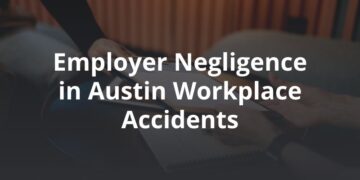Filing a personal injury case can put you on your way to obtaining compensation for injuries you suffered as a result of someone else’s wrongdoing. While the facts and legal arguments in each personal injury case are unique, there are some common steps you can take to strengthen your case. Read on for our personal injury case checklist.
What Types of Claims and Injuries are Common in a Personal Injury Case?
The area of personal injury is a broad category. It encompasses many different potential claims, which usually arise when one party suffers injury or harm as a result of an accident. The following are just a few examples:
- Negligence
- Motor vehicle accidents
- Premises liability
- Malpractice
- Slip-and-falls
- Dog bites
- Work injuries
- Product liability
- Wrongful death
Each personal injury claim has certain elements that must be proven in order for you to recover from your injuries and other damages. As an example, in a negligence case, you’ll have to prove that the other party owed you a duty of care to be safe, and breached that duty by acting negligently. You will also have to prove that the other party directly caused your damages and injuries. Although every personal injury case is different, there are some typical steps that happen in each case.
What are the Typical Steps in a Personal Injury Suit?
- Your attorney will meet with you to go over the facts of your case. You will be asked to tell your side of the story and describe what led to your injuries. Your attorney will also ask you to gather any evidence, such as documentation, bills, and photos that you might have.
- Your attorney will file a complaint, typically stating a claim of negligence, in the appropriate court. The complaint, called a petition in Texas, will plead your factual allegations and legal claim.
- Your attorney will ensure that the other party is served with process. At this point, the other party will have a specific time by which they must file their answer to your complaint. Other pleadings and motions are also possible at this stage — for example, your attorney may need to defend against a motion to dismiss the claims.
- Next, the period of discovery will take place, allowing the parties to exchange relevant information. This is done through specific rules of procedure, using tools such as document requests and depositions.
- A very important part of the process is settlement negotiations. Your attorney will attempt to negotiate a favorable settlement with the other side, allowing you to resolve your matter without going to court.
- Should settlement negotiations and any other alternative dispute resolution methods fail, your case will move forward. You may have a pretrial conference between the parties, where you will discuss the major issues and set the plans for trial.
- Your personal injury claim will be heard by a jury if you requested one. Each side will present its case, evidence, and witnesses. The jury will deliberate and reach a verdict.
A Personal Injury Case Checklist — How Can You Help Your Attorney Progress Your Case?
Although your personal injury attorneys will be doing most of the work on your case, there are some things you can do to help. Keep in communication with your attorney about your injuries, any documents or correspondence regarding your case, and any evidence of your damages.
In particular, you can also help by keeping track of the following items, all of which will help strengthen your case:
- Medical records, including your doctor’s notes; prescriptions; and any hospital or emergency room records.
- Any accident or police reports that are filed by either you or the other party in the case.
- Insurance policies and paperwork, along with all correspondence with insurance companies.
- Any bills, including medical bills, repair bills, and others that show your expenses as a result of the accident or injury.
- Wage statements or pay stubs that help document your income prior to your accident or injury.
- Any photos or videos of the scene, as well as any photos, videos, or journals that show the effects of your pain and suffering or changed lifestyle as a result of the accident or injury.
How Can FVF Help?
Since every injury case is different, it helps to have a personal injury lawyer who is experienced in handling a variety of accidents. FVF’s mission is to educate you on your rights and options so you can make good decisions under difficult circumstances. Through this mission, we have helped countless people put their lives back together, whether after a traffic accident, workplace injury, or another event.
Our Austin personal injury lawyers have decades of experience in traffic accidents, work injuries, and other types of injuries, and we are confident we can help you no matter what type of injury you sustain. Contact us today to schedule a free, remote consultation with a personal injury lawyer near you.







